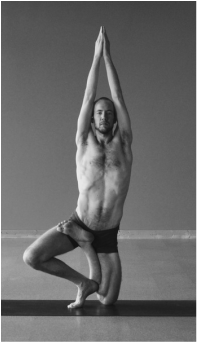|
Our bodies are assaulted by a constant and significant downward force: gravity. It has weighed us down since the moment we were born and it will continue to do so even after we die. We are fortunate to have a rigid structure in our bodies that allows us to be upright, even against the force of gravity - our bones.
Muscles are designed for motion, not stability. Quite simply, muscles move the bones into position so the bones can transfer our body's weight into the ground. The muscles themselves do not transfer the weight. The goal of physical yogic practice (asana) is to optimize the systems of the body so they can function with the least amount of effort - maximum efficiency. One reason that so many yogic traditions emphasize alignment is that an aligned position is the way in which our skeletal structure can most efficiently transfer our weight into the ground. This means that the best alignment is often the position of least effort. To develop our muscles, we can take our bodies out of alignment so that our muscles instead of our bones bear the weight of the body. Good examples of this are Low Plank and Chair Pose. We purposely circumvent the body's weight bearing structure by bending the arms or legs. Then the muscles of the arms (Low Plank) or legs (Chair) become responsible for bearing the weight. These positions are good for short periods of time to build muscular strength. Our heels are huge powerful bones, as are our femurs (thigh bones), tibias (shin bones) and pelvis. These are the structures designed to hold the hundreds of pounds of our bodies upright against gravity. Our toes are not designed for weight bearing. They are small, mobile structures for balance and motion. We can bear weight on them for short periods of time, but there is little value in over-building their strength. The goal of yogic physical practice (asana) is to develop the body to it's greatest natural capacity, not to exert our mental control over its abilities and shaping them to our will. We must understand the natural functions of the body before we begin to practice. Anatomy, physiology and kinesiology are great places to start - learning how the body's systems are designed and what their purposes might be.
0 Comments
Leave a Reply. |
This journal honors my ongoing experience with the practice, study and teaching of yoga.
My FavoritesPopular Posts1) Sridaiva Yoga: Good Intention But Imbalanced
2) Understanding Chair Posture 2) Why I Don't Use Sanskrit or Say Namaste 3) The Meaningless Drudgery of Physical Yoga 5) Beyond Bikram: Why This Is a Great Time For Ghosh Yoga Categories
All
Archives
November 2017
|


 RSS Feed
RSS Feed